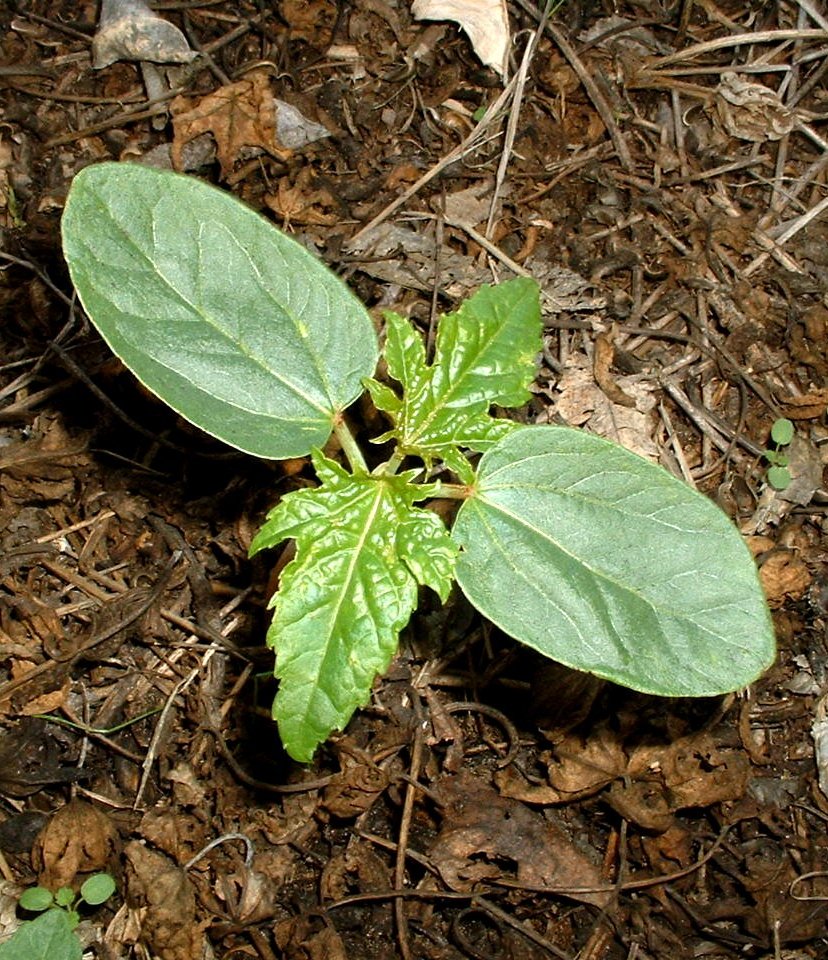Dicotyledon on:
[Wikipedia]
[Google]
[Amazon]

 The dicotyledons, also known as dicots (or, more rarely, dicotyls), are one of the two groups into which all the
The dicotyledons, also known as dicots (or, more rarely, dicotyls), are one of the two groups into which all the
World list of dicot species (aka Magnoliopsida) from the Catalogue of Life
253,406 species.
Tree browser for dicot orders, families and genera with species counts and estimates via the Catalogue of Life
{{Authority control Historically recognized angiosperm taxa

 The dicotyledons, also known as dicots (or, more rarely, dicotyls), are one of the two groups into which all the
The dicotyledons, also known as dicots (or, more rarely, dicotyls), are one of the two groups into which all the flowering plant
Flowering plants are plants that bear flowers and fruits, and form the clade Angiospermae (), commonly called angiosperms. The term "angiosperm" is derived from the Greek words ('container, vessel') and ('seed'), and refers to those plants t ...
s (angiosperms) were formerly divided. The name refers to one of the typical characteristics of the group: namely, that the seed
A seed is an embryonic plant enclosed in a protective outer covering, along with a food reserve. The formation of the seed is a part of the process of reproduction in seed plants, the spermatophytes, including the gymnosperm and angiosper ...
has two embryonic leaves or cotyledon
A cotyledon (; ; ; , gen. (), ) is a significant part of the embryo within the seed of a plant, and is defined as "the embryonic leaf in seed-bearing plants, one or more of which are the first to appear from a germinating seed." The numb ...
s. There are around 200,000 species
In biology, a species is the basic unit of classification and a taxonomic rank of an organism, as well as a unit of biodiversity. A species is often defined as the largest group of organisms in which any two individuals of the appropriat ...
within this group. The other group of flowering plants were called monocotyledon
Monocotyledons (), commonly referred to as monocots, ( Lilianae '' sensu'' Chase & Reveal) are grass and grass-like flowering plants (angiosperms), the seeds of which typically contain only one embryonic leaf, or cotyledon. They constitute one ...
s (or monocots), typically each having one cotyledon. Historically, these two groups formed the two divisions of the flowering plants.
Largely from the 1990s onwards, molecular phylogenetic research confirmed what had already been suspected: that dicotyledons are not a group made up of all the descendants of a common ancestor (i.e., they are not a monophyletic
In cladistics for a group of organisms, monophyly is the condition of being a clade—that is, a group of taxa composed only of a common ancestor (or more precisely an ancestral population) and all of its lineal descendants. Monophyletic gr ...
group). Rather, a number of lineages, such as the magnoliids
Magnoliids (or Magnoliidae or Magnolianae) are a clade of flowering plants. With more than 10,000 species, including magnolias, nutmeg, bay laurel, cinnamon, avocado, black pepper, tulip tree and many others, it is the third-largest group of a ...
and groups now collectively known as the basal angiosperms, diverged earlier than the monocots did; in other words, monocots evolved from within the dicots, as traditionally defined. The traditional dicots are thus a paraphyletic
In taxonomy, a group is paraphyletic if it consists of the group's last common ancestor and most of its descendants, excluding a few monophyletic subgroups. The group is said to be paraphyletic ''with respect to'' the excluded subgroups. In ...
group.
The eudicots
The eudicots, Eudicotidae, or eudicotyledons are a clade of flowering plants mainly characterized by having two seed leaves upon germination. The term derives from Dicotyledons.
Traditionally they were called tricolpates or non-magnoliid dicot ...
are the largest monophyletic group within the dicotyledons. They are distinguished from all other flowering plants by the structure of their pollen. Other dicotyledons and the monocotyledons have monosulcate
Pollen is a powdery substance produced by seed plants. It consists of pollen grains (highly reduced microgametophytes), which produce male gametes (sperm cells). Pollen grains have a hard coat made of sporopollenin that protects the gametophyt ...
pollen (or derived forms): grains with a single sulcus. Contrastingly, eudicots have tricolpate
The eudicots, Eudicotidae, or eudicotyledons are a clade of flowering plants mainly characterized by having two seed leaves upon germination. The term derives from Dicotyledons.
Traditionally they were called tricolpates or non-magnoliid dicots ...
pollen (or derived forms): grains with three or more pores set in furrows called colpi.
Comparison with monocotyledons
Aside fromcotyledon
A cotyledon (; ; ; , gen. (), ) is a significant part of the embryo within the seed of a plant, and is defined as "the embryonic leaf in seed-bearing plants, one or more of which are the first to appear from a germinating seed." The numb ...
number, other broad differences have been noted between monocots and dicots, although these have proven to be differences primarily between monocots and eudicots
The eudicots, Eudicotidae, or eudicotyledons are a clade of flowering plants mainly characterized by having two seed leaves upon germination. The term derives from Dicotyledons.
Traditionally they were called tricolpates or non-magnoliid dicot ...
. Many early-diverging dicot groups have monocot characteristics such as scattered vascular bundles
A vascular bundle is a part of the transport system in vascular plants. The transport itself happens in the stem, which exists in two forms: xylem and phloem. Both these tissues are present in a vascular bundle, which in addition will includ ...
, trimerous flowers, and non-tricolpate pollen. In addition, some monocots have dicot characteristics such as reticulated leaf veins.
Classification
Phylogeny
The consensusphylogenetic tree
A phylogenetic tree (also phylogeny or evolutionary tree Felsenstein J. (2004). ''Inferring Phylogenies'' Sinauer Associates: Sunderland, MA.) is a branching diagram or a tree showing the evolutionary relationships among various biological spec ...
used in the APG IV system
The APG IV system of flowering plant classification is the fourth version of a modern, mostly molecular-based, system of plant taxonomy for flowering plants (angiosperms) being developed by the Angiosperm Phylogeny Group (APG). It was published ...
shows that the group traditionally treated as the dicots is paraphyletic
In taxonomy, a group is paraphyletic if it consists of the group's last common ancestor and most of its descendants, excluding a few monophyletic subgroups. The group is said to be paraphyletic ''with respect to'' the excluded subgroups. In ...
to the monocots:
Historical
Traditionally, the dicots have been called the Dicotyledones (or ''Dicotyledoneae''), at any rank. If treated as a class, as they are within the Cronquist system, they could be called the Magnoliopsida after the type genus ''Magnolia
''Magnolia'' is a large genus of about 210 to 340The number of species in the genus ''Magnolia'' depends on the taxonomic view that one takes up. Recent molecular and morphological research shows that former genera ''Talauma'', ''Dugandiodendr ...
''. In some schemes, the eudicots were either treated as a separate class
Class or The Class may refer to:
Common uses not otherwise categorized
* Class (biology), a taxonomic rank
* Class (knowledge representation), a collection of individuals or objects
* Class (philosophy), an analytical concept used differently ...
, the Rosopsida (type genus ''Rosa''), or as several separate classes. The remaining dicots (palaeodicots
The basal angiosperms are the flowering plants which diverged from the lineage leading to most flowering plants. In particular, the most basal angiosperms were called the ANITA grade, which is made up of ''Amborella'' (a single species of shrub ...
or basal angiosperms) may be kept in a single paraphyletic
In taxonomy, a group is paraphyletic if it consists of the group's last common ancestor and most of its descendants, excluding a few monophyletic subgroups. The group is said to be paraphyletic ''with respect to'' the excluded subgroups. In ...
class, called Magnoliopsida, or further divided. Some botanists prefer to retain the dicotyledons as a valid class, arguing its practicality and that it makes evolutionary sense.
APG vs. Cronquist
The following lists show the orders in the Angiosperm Phylogeny GroupAPG IV system
The APG IV system of flowering plant classification is the fourth version of a modern, mostly molecular-based, system of plant taxonomy for flowering plants (angiosperms) being developed by the Angiosperm Phylogeny Group (APG). It was published ...
traditionally called dicots, together with the older Cronquist system.
Dahlgren and Thorne systems
Under the Dahlgren and Thorne systems, the subclass name ''Magnoliidae'' was used for the dicotyledons. This is also the case in some of the systems derived from the Cronquist system. These two systems are contrasted in the table below in terms of how each categorises by superorder; note that the sequence within each system has been altered in order to pair corresponding taxa The Thorne system (1992) as depicted by Reveal is: There exist variances between the superorders circumscribed from each system. Namely, although the systems share common names for many of the listed superorders, the specific list orders classified within each varies. For example, Thorne’s ''Theanae'' corresponds to five distinct superorders under Dahlgren’s system, only one of which is called ''Theanae.''See also
*Calyciflorae
Calyciflorae is a grouping of plants that is no longer used by botanists. Augustin Pyramus de Candolle defined it as a subclass within the class Dicotyledoneae
The dicotyledons, also known as dicots (or, more rarely, dicotyls), are one of the ...
References
External links
World list of dicot species (aka Magnoliopsida) from the Catalogue of Life
253,406 species.
Tree browser for dicot orders, families and genera with species counts and estimates via the Catalogue of Life
{{Authority control Historically recognized angiosperm taxa